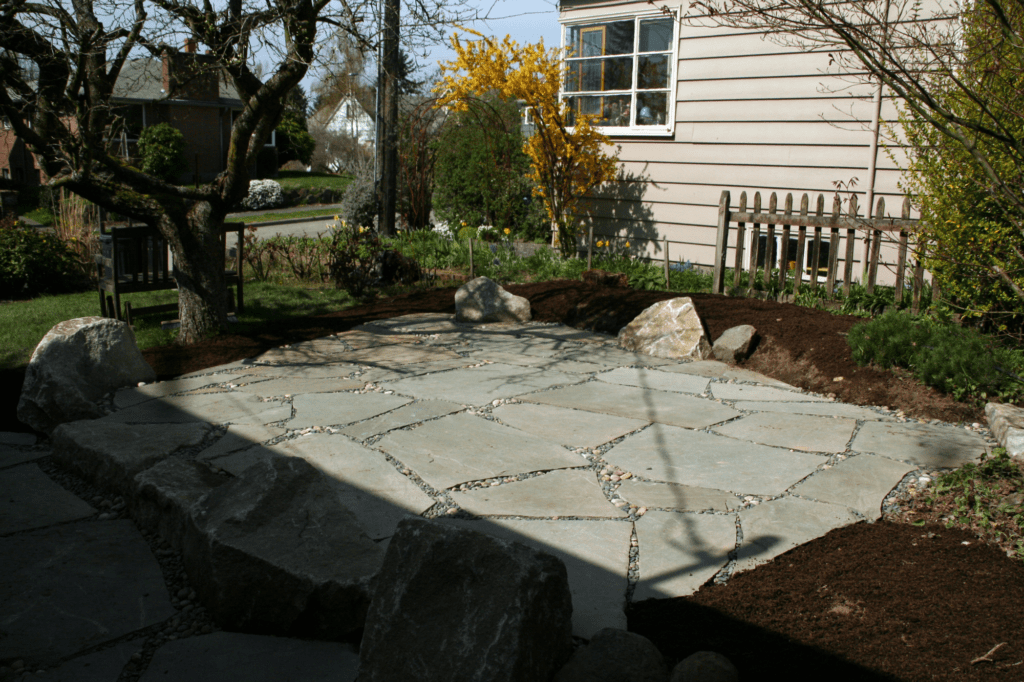Choosing the right pavers for your patio is crucial to create a beautiful and functional outdoor space. With so many options available, it can be overwhelming to decide which type of paver will work best for your project. Your choice will depend on several factors, including style, budget, durability, and maintenance.
In this article, we will discuss different types of pavers for your patio, including the most popular options and their unique characteristics. You will learn how to choose the best pavers for your patio based on your specific needs and preferences.
We will also explore various materials used for patio pavers and present creative patio paver designs to inspire your next project. Finally, we will address common questions about patio pavers to help you make an informed decision.
Popular Patio Paver Options
When it comes to patio paver options, there are several popular choices to consider. Each option offers unique features and benefits, so it’s important to weigh your options carefully before making a decision.
Concrete Pavers
Concrete pavers are a popular choice for many homeowners due to their low cost and versatility. They come in a variety of colors, shapes, and sizes, making them easy to customize to fit your specific patio design. Concrete is also a durable material that can withstand heavy foot traffic and harsh weather conditions.
One downside of concrete pavers is that they can be prone to cracking over time if they are not installed correctly or if the ground beneath them shifts. Additionally, they may require occasional cleaning and sealing to maintain their appearance over time.
Natural Stone Pavers
Natural stone pavers, such as flagstone or granite, are a beautiful and durable option for a patio. They offer a natural, rustic look that blends seamlessly with outdoor surroundings.
Stone pavers are able to withstand heavy foot traffic and require little maintenance beyond occasional cleaning. They are also extremely durable and can last for decades with proper care.
However, natural stone pavers can be more expensive than other options, and their irregular shapes and sizes can make installation more difficult and labor-intensive.
Interlocking Pavers
Interlocking pavers are a popular option due to their ease of installation and maintenance. They are available in a range of colors and patterns, making them easy to customize to your preferred design.
One of the main advantages of interlocking pavers is their ability to easily adjust to shifting soil, making them less prone to cracking or shifting over time. They also require very little maintenance beyond occasional cleaning.
However, interlocking pavers may be more expensive than other options, and their uniform appearance may not be as visually appealing as natural stone or other materials.
Brick Pavers
Brick pavers offer a classic, timeless look that never goes out of style. They come in a range of warm, earthy tones, and can be laid in a variety of patterns to create a unique design.
Brick is a durable material that can withstand heavy foot traffic and weather conditions, and requires little maintenance beyond occasional cleaning. Additionally, individual bricks can be easily replaced if they become damaged over time.
However, brick pavers may be more expensive than other options, and their uniform size may limit design options.
Choosing the Best Pavers for Your Patio
With so many different types of patio pavers available, it can be overwhelming to make the right choice for your outdoor space. Here are some factors to consider when selecting the best pavers for your patio:
| Factor | Considerations |
|---|---|
| Durability | Choose pavers that can withstand the weather conditions in your area. For example, if your region experiences harsh winters, select pavers that won’t crack or break under freeze-thaw cycles. |
| Maintenance | Consider how much maintenance the pavers will require. Some materials, like natural stone, may require more frequent sealing or cleaning to maintain their appearance and prevent stains. |
| Style | Think about the style of your outdoor space and select pavers that complement it. For example, if you have a modern patio, choose sleek, minimalist pavers, while rustic pavers may be better suited to a country-style outdoor area. |
| Budget | Set a budget for your patio pavers and choose materials that fit within it. Keep in mind that some materials, like natural stone, may be more expensive than others. |
In addition to these factors, it’s important to choose pavers that are appropriate for the intended use of the patio. For example, if you plan to use your patio for outdoor dining or cooking, choose pavers that can withstand spills and stains.
With these considerations in mind, you can select the best pavers for your patio that will meet your needs, budget, and style preferences.
Different Materials for Patio Pavers
Patio pavers come in a variety of materials, each with unique characteristics and benefits. Let’s explore some of the most popular materials for patio pavers.
| Material | Characteristics | Pros | Cons |
|---|---|---|---|
| Concrete | Durable, versatile, and available in various shapes, colors, and patterns. | Affordable, easy to install and maintenance, and resistant to weather and fading. | Prone to cracking, limited lifespan, and not eco-friendly. |
| Natural Stone | Elegant, timeless, and unique, with natural variations in color and texture. | Adds value to the property, durable, and resists slipping and fading. | Expensive, heavy, and prone to chipping, staining, and water absorption. |
| Brick | Rustic, charming, and easy to customize, with various sizes, colors, and patterns. | Affordable, durable, and requires little maintenance. | Prone to cracking, fading and shifting, and not slip-resistant. |
| Porcelain | Stylish, modern, and versatile, with consistent colors and sizes. | Waterproof, stain-resistant, and durable, with low maintenance and eco-friendly options. | Expensive, brittle, and prone to scratching, fading, and difficult to DIY install. |
When choosing a material for patio pavers, consider the overall aesthetic, durability, maintenance, and budget. Concrete and brick are affordable and easy to install, while natural stone and porcelain offer premium quality and longevity.
Creative Patio Paver Designs
Whether you’re looking to create a bold statement or a subtle accent, there are endless possibilities when it comes to designing your patio with pavers. Here are some creative ideas to spark your imagination:
- Geometric pattern: Create a striking design by using pavers of different shapes, sizes, and colors to form a geometric pattern. Triangles, squares, and hexagons can all be incorporated for a bold and modern look.
- Random pattern: For a more natural and effortless vibe, consider a random pattern using pavers in varying shades of the same color. This relaxed design will create a cozy and inviting atmosphere.
- Circular design: A circular patio design can provide a unique focal point and a dynamic flow to your backyard landscape. Use circular pavers surrounded by smaller square or rectangular pavers to create a stunning pattern.
No matter which design you choose, it’s essential to consider the color and texture of your pavers to complement the style of your home and outdoor environment.
FAQ – Common Questions About Patio Pavers
If you’re new to patio pavers, you likely have some questions about the material, installation process, and maintenance requirements. In this section, we’ve compiled a list of frequently asked questions to help you make informed decisions when selecting and installing patio pavers.
How are patio pavers installed?
The installation process for patio pavers typically involves preparing the area by removing grass and debris, leveling the ground, and adding a layer of compactable gravel. The pavers are then arranged in the desired pattern and secured in place with sand or mortar.
Do patio pavers require maintenance?
Yes, patio pavers require some maintenance to keep them looking their best. This may include sweeping or hosing off debris, periodic sealing to protect against stains and weather damage, and re-leveling or replacing pavers as they settle or become damaged over time.
What is the cost of patio pavers?
The cost of patio pavers can vary depending on the material, size, and complexity of the installation. Concrete pavers are typically less expensive than natural stone or porcelain pavers, but may be more susceptible to wear and weather damage over time. It’s important to consider both the upfront cost and long-term maintenance requirements when selecting patio pavers.
Can patio pavers be installed over an existing concrete slab?
Yes, it’s possible to install patio pavers over an existing concrete slab. This can be a cost-effective option that requires less preparation work than installing pavers on bare ground. However, it’s important to ensure that the concrete is in good condition and that the pavers are properly secured to prevent cracking or shifting over time.











